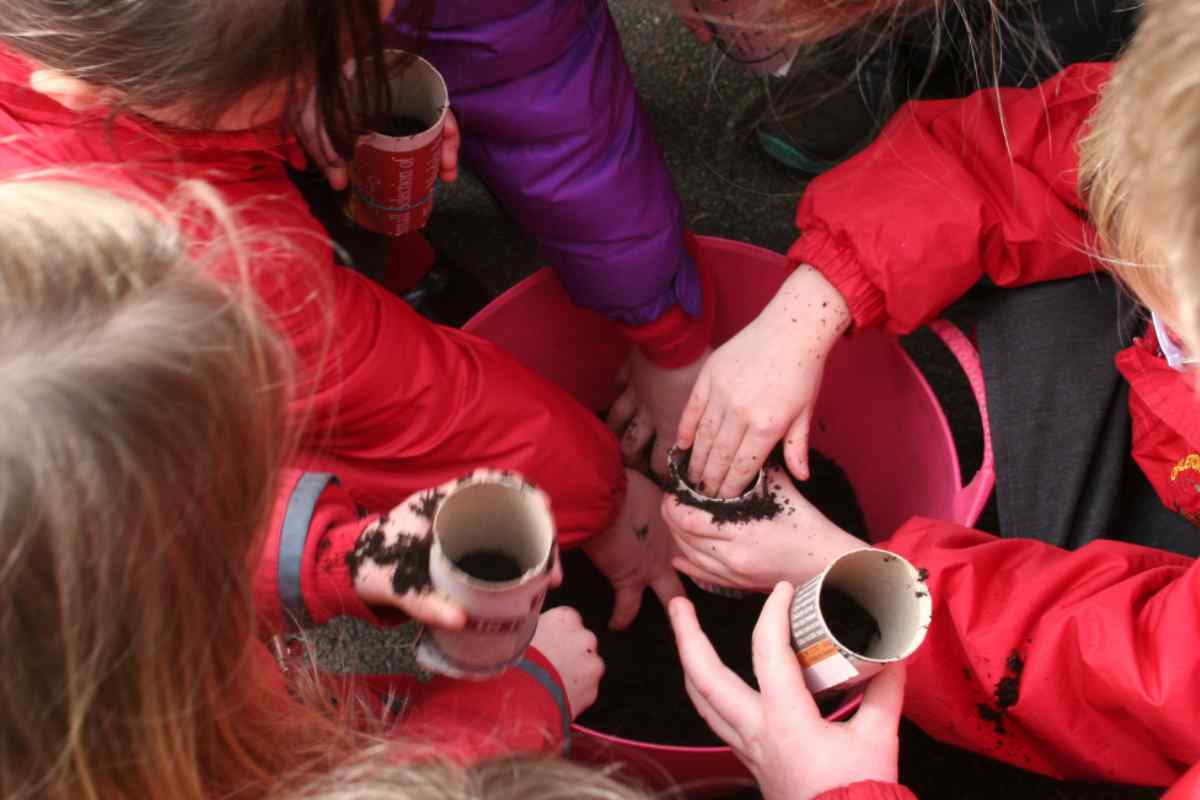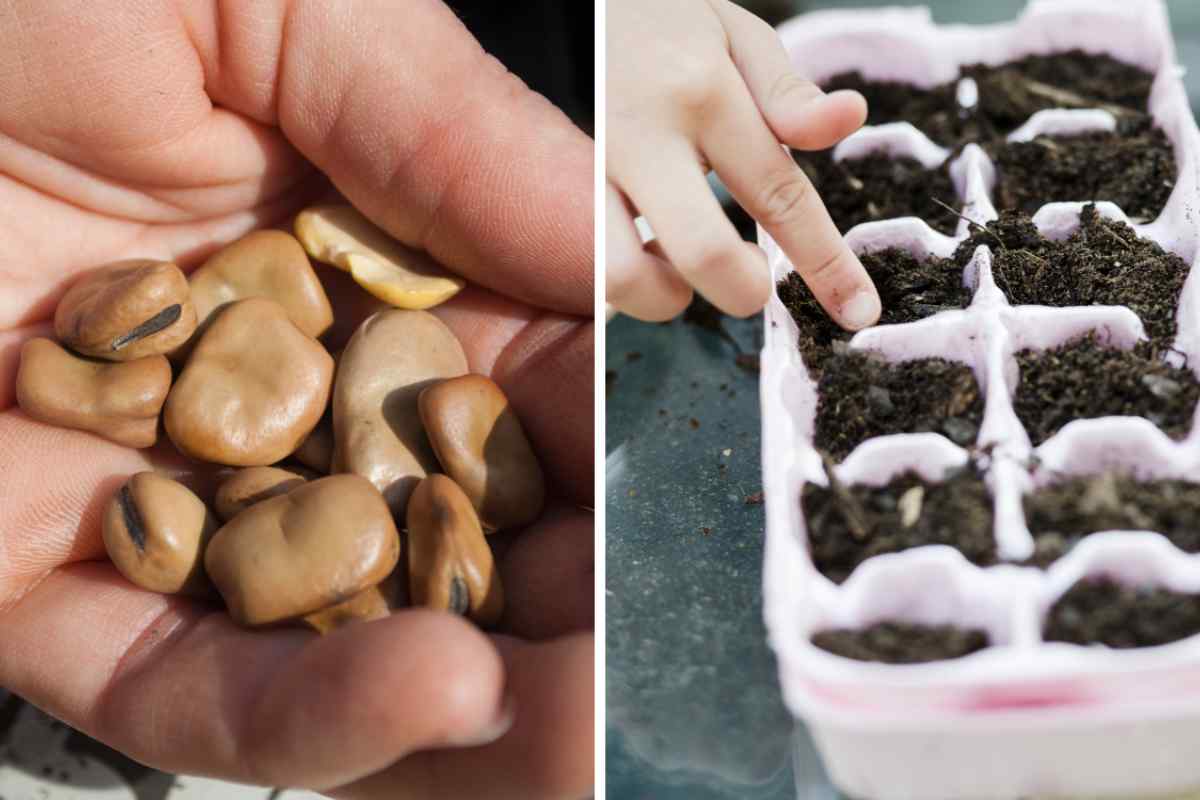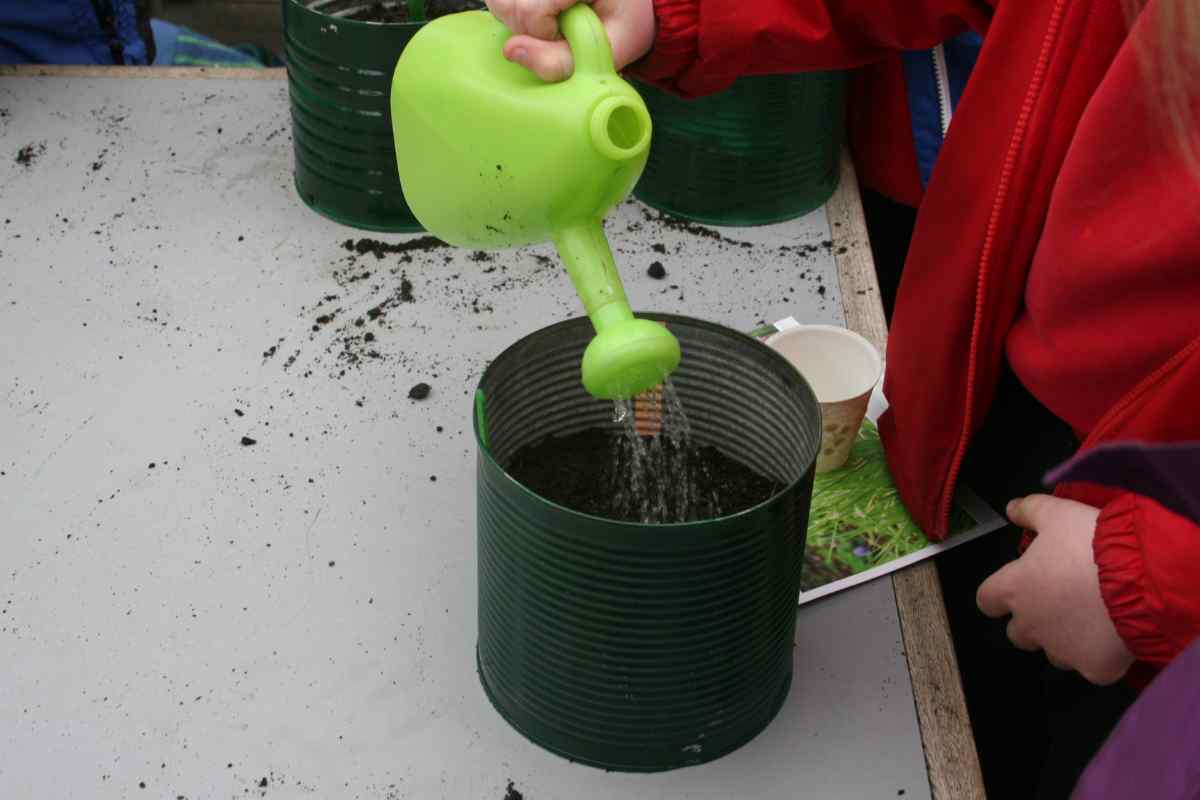What are the learning goals?
Sowing broad beans gives an opportunity to work on a few different things:
Get children to prepare the growing equipment
Early broad beans need to be started indoors. You can plant them straight into the soil outside after March, but planting in a pot inside gives children more opportunities to learn and observe.
You can start them off in a lot of different containers. Small pots, a module tray or root trainer if you have them, old plastic pint glasses or yoghurt pots, or old loo roll middles all work fine. They just need to be deep enough to get a few roots and leaves going before planting them out.

Decide whether to provide gloves for children to handle the compost.
It will depend on whether it is shop compost or using home rotted materials.
If you are working with children in an education setting, check your risk assessment for rules in your setting.
Most composts will work for this as long as they are not too heavy and claggy - if they are then add in some seed compost or sand to lighten them up a bit so the seeds don't rot before they get going. Broad beans are pretty forgiving though so don't worry too much.
Get the pots ready
Children can count out enough pots for the number of plants you want (plus a few extras in case some plants fail).
They can get some compost ready and fill whatever pots you are using with compost.
An adult might need to move heavy compost bags or pour some into a bucket to make it easier to work with.
Children should practice putting the compost into the pots without squashing it down too much, they can often get a bit enthusiastic about fitting as much as possible in!
If you're with a group, it's a good opportunity to practice taking turns in the compost bucket and they can be mindful of not scattering it everywhere.
They should fill the pots most of the way up as these seeds are robust enough to be poked into the soil.

Planting the seeds
Children can poke a hole into the compost for the seed to go in.
Then they can place one seed, on its side, into each hole.
When all the pots are filled, cover them over gently with soil.

Finishing off
The children can now water their pots.
They can use any writing skills to make labels for the pots. If they don't yet write letters they can draw a bean leaf or a broad bean shape.
If you are working in a group and children are looking after their own beans then consider whether you want to label them with their names or just pool them together. There are pros and cons to both. If you have individually labelled beans, make sure you have some spares to replace the inevitable failures.

Caring for the plants
The pots should be kept somewhere light and protected from the coldest weather, a window ledge or cold greenhouse is fine.
Children can notice when they start to sprout. They can see which ones grow fastest. They can see whether they bend towards a light source and move the pots around to make them grow evenly.
Children can check for dryness and water them (see our article on learning through watering plants with a handy watering chart).
When the plants are big enough (anytime from late March to early June) you can help them to plant the beans outside.

More information
Here is a concise video by Grow Veg which will show children the basics of growing these easy seeds.
